Angelo Pretolani (Genoa, 1953) is one of the pioneers of Italian performance. His first performance, Minotaur,dates back to 1973 , with which he denounced the bewilderment of people in the face of the often uncontrolled growth of cities. Since then Pretolani has expressed himself through numerous performances (one of which has been going on continuously for ten years on Facebook to explore the potential of social networks), but also through paintings, photographs, poetry, and theater. He has exhibited in numerous galleries and museums. And he talks about himself in this conversation with Gabriele Landi.
GL. Hi Angelo, you often show the first signs of a predisposition to art from childhood was this also the case for you? Do you tell?
AP. I answer by “fishing” from an ekphrasis of one of my performances from “Under the pavement...”: Friday, September 7, 2018 - Angelo rubs a laurel leaf on his forehead, repeatedly. A few nights ago, out of the blue, a memory from when he was a child popped into his mind ... one day at the market his mom bought him a small kaleidoscope; maybe it all starts from there. Aspiratio numinis. Regarding always my childhood two other ekphrasis clarify quite well what happened: Friday, February 13, 2015 - Angelo as a child dreamed of no life, he thought he had no right to one; he arranges two laurel leaves next to each other, close together, like unfolded wings of an absent body. He smiles, in front of a white wall; he digs a handkerchief out of his pocket, waves it in the air as if to wave goodbye to someone who is leaving -- he continues to draw (da)his pleonastic worlds, at night, especially, at bay (and there are those who see in these drawings their own obsessions). He hears an offstage bell, jingling, a lot - there are times when the only possibility of salvation is sleep... there are stories yet to be written... there are. Friday, April 10, 2015 - Angelo sighs; puckers his lips in a completely behavioral grimace. He perfumes his hands by rubbing them on a laurel leaf; he smiles, whispers, I’m tired of the curious - trust in multitudinousness has always cost deception. For always deliberately neglecting it, he will now have to begin to look at the weather, not the atmospheric and not from a social but a physical point of view. As a child he developed no sense of belonging to places, where they put him he was staying, now he is not well anywhere.
Were there any encounters with people, places, objects that fostered your approach to art?
I think ... probably two films ... 1966, Blow up by Michelangelo Antonioni and 1970 Performance directed by Donald Cammell and Nicolas Roeg. More the former than the latter... Blow up I also recalled a few years ago in an action “Under the pavement...” Friday, Oct. 3, 2014 / h 8:21 a.m. - Angelo strolls through Parmenides Woods; he smiles at Friday, smiles, yes, he learned more from Antonioni’s Blow up, in the climax that film radiates, than from all the art history lessons he took later in high school. He, too, occasionally plays without a ball, even when he doesn’t realize it. He whispers, remaining unaware is not an act of will.
I wanted to ask you to talk about Gian Franco Fasce, what was your relationship with him?
With Gianfranco Fasce there was a relationship of esteem and mutual respect, very intense, certainly, but he was not my teacher if that’s what you want to know. I have no master to point to, although Flaminio Gualdoni in the presentation in the catalog to my solo exhibition at Galleria Spazia (Bologna, 1995) wrote that Gianfranco Fasce was the young Pretolani’s master. As I have already told you on the occasion of your Primo amore [ed: Parola d’artista, Primo amore, October 24, 2020]: “Interested in a different dimension of making art, I always looked around more than back; I have already said it on other occasions, the history of art I learned as I went along, as I proceeded in myself considering it more important to feel than to understand or know. [...] I remember once at lunch at Rosanna Chiessi’s house that everyone was addressing Bob Watts as maestro, my friend and performer Augusto Concato passed me under the table a piece of paper on which he had written, ’I am my own maestro.’” Here. To this answer I can add, to make it more “complete,” the ekphrasis of my performance under the pavement on Friday, August 16, 2019, and posted on Facebook with an accompanying image: Friday, August 16, 2019: Angelo entails; slow marcher, “unraveler” of inincident acts. The first to believe in him was painter Gianfranco Fasce, great understanding, a relationship based on imagination. Never saturated, both fascinated by the unacceptable.
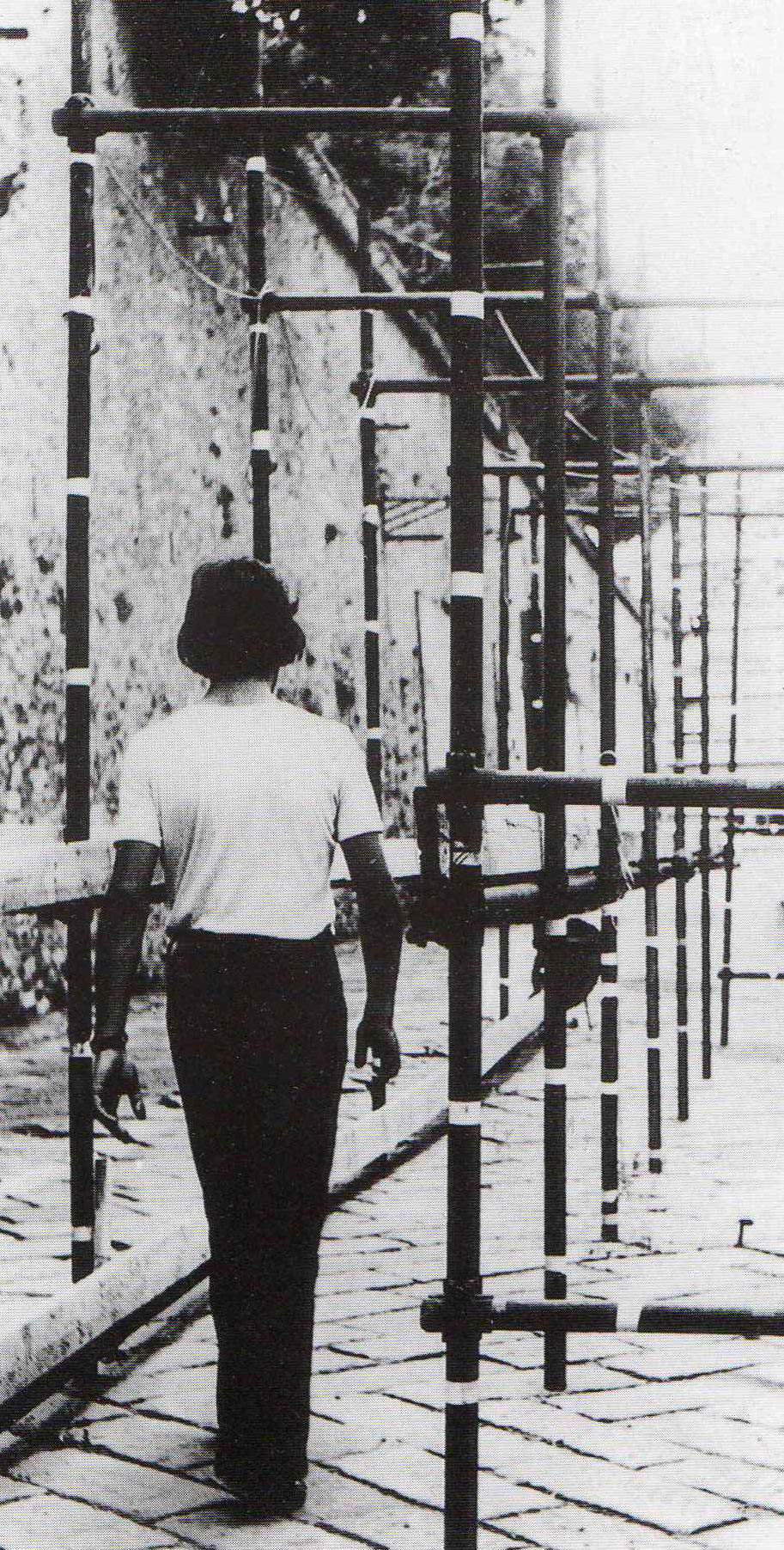
 Angelo Pretolani,
Angelo Pretolani,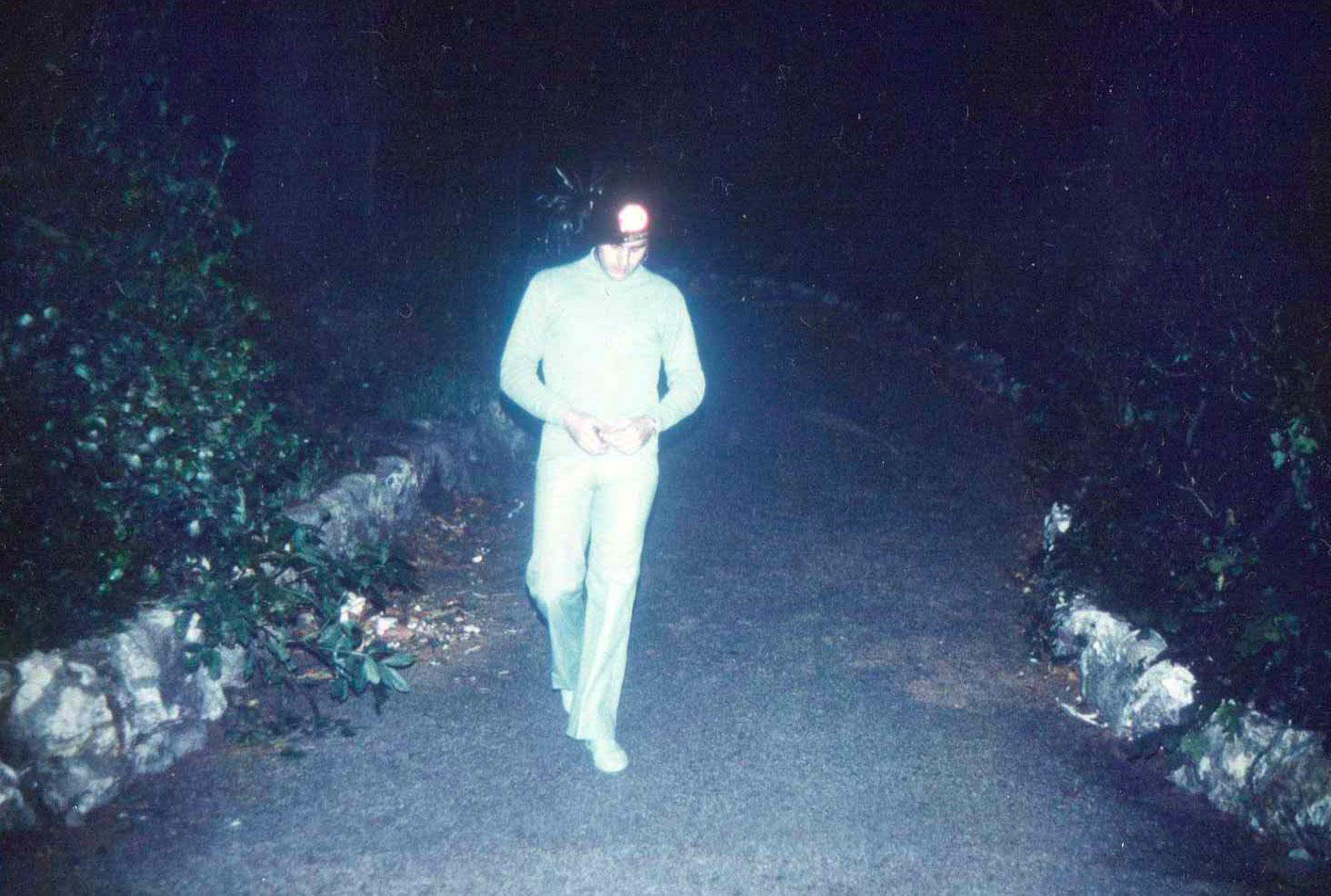 Angelo Pretolani,
Angelo Pretolani, Angelo Pretolani,
Angelo Pretolani,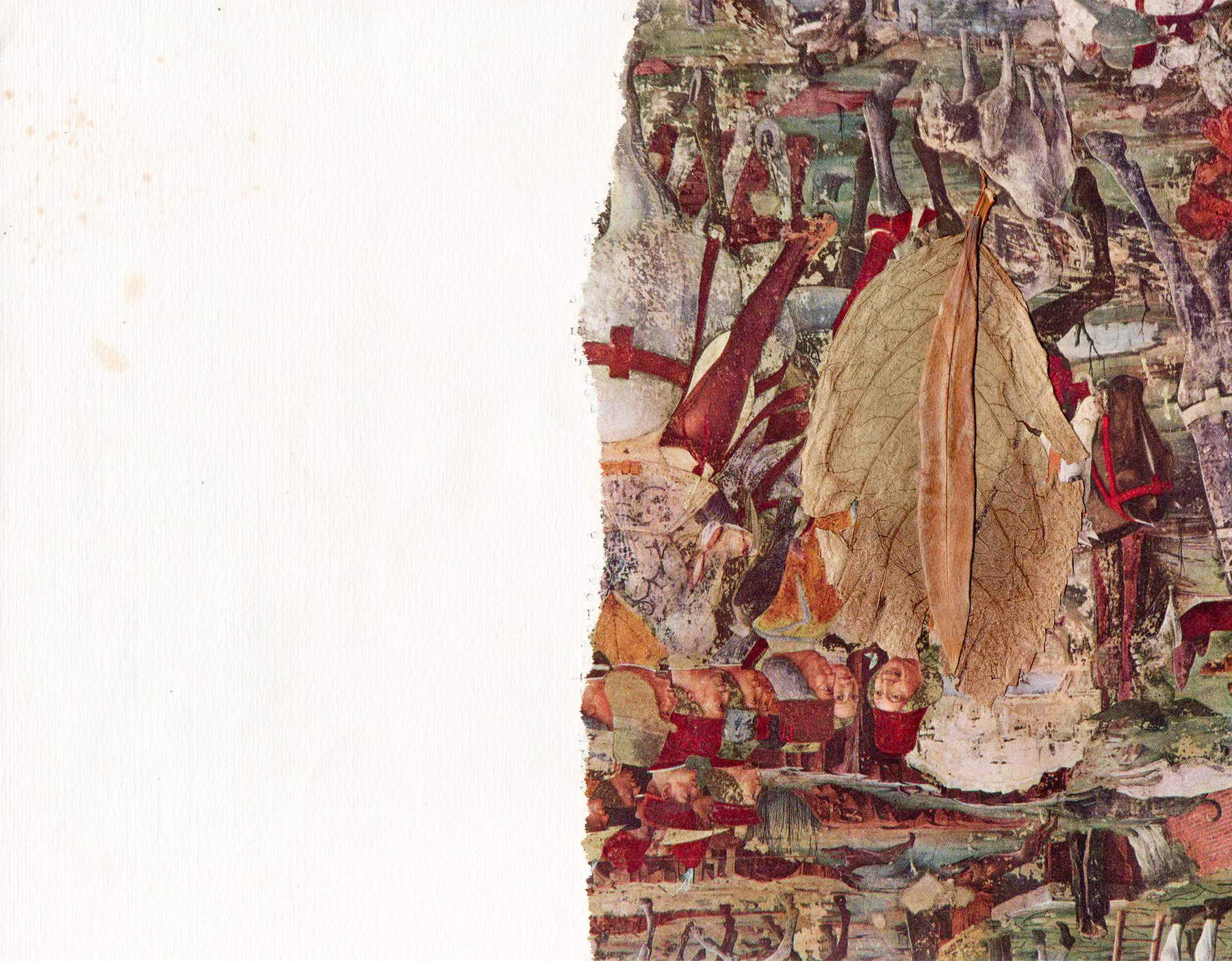 Angelo Pretolani,
Angelo Pretolani,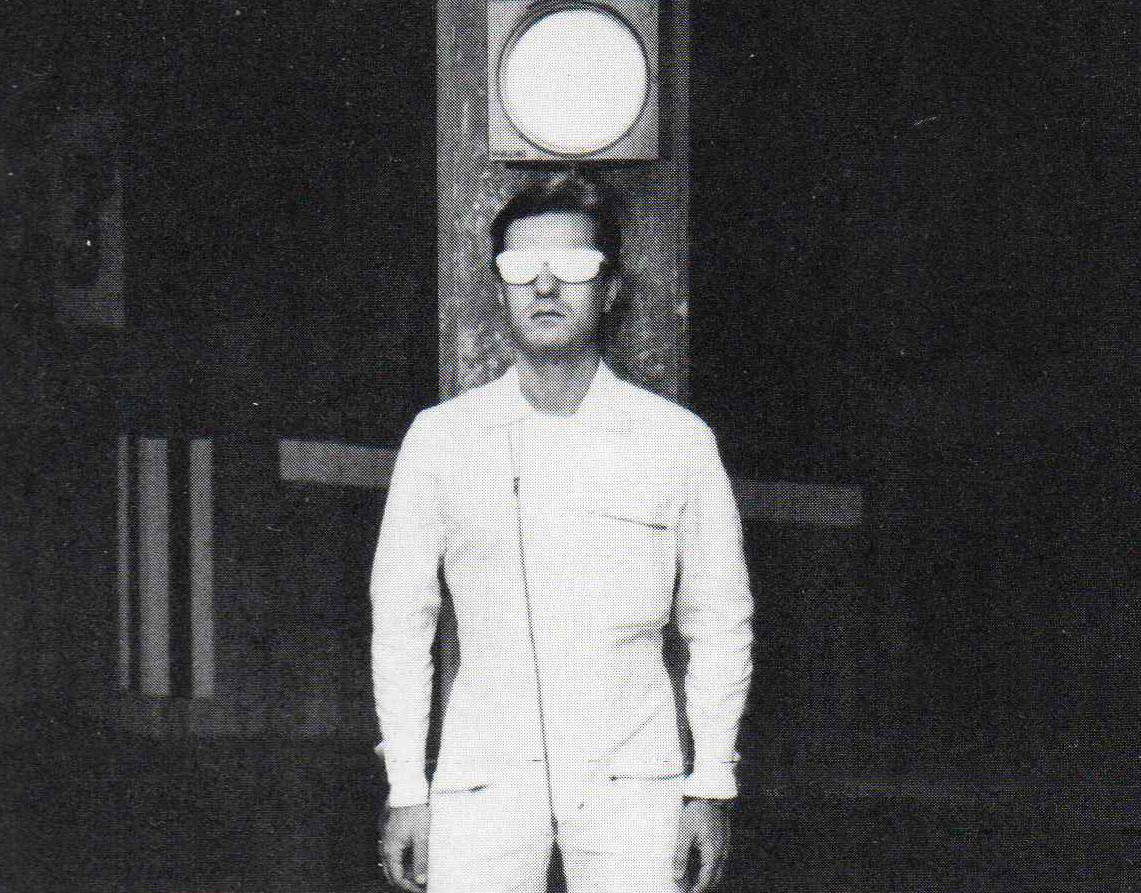
Did your path start from painting?
Initially, but for a very brief period, I was already operating in performance at the age of 20 (as attested by my participation in the X Quadriennale of 1975 with works from 1973)...except to return to it around the mid-1980s but always with performative intentions...referring to Flaminio Gualdoni’s text written for my solo exhibition at the Spazia gallery in Bologna, we read: "The proper attention is never paid to the importance, in John Cage’s work, of the study and collection of mushrooms [...] Pretolani, choosing for himself a completely marginal path, a sort of small sapiential path, decided to frequent similar woods [...] He collected pieces of wood, branches, roots: scraps together spurious, because they were expelled from the course of natural necessity [...] These materials Pretolani transferred to his studio. [...] The twisted branches, combined with elementary ingenuity - that of the faber of tents, canoes, drums... - become skeleton and centina on which the canvas of the painting stretches, which assumes for that very reason a fractured and irregular course, almost as if to redecline by non-methodological ways an objective possibility of the form-painting.“ I would also like to add a thought by Fabio Mauri: ”For me, however, the performer never moved away from painting, although he did not make paintings. With a strongly signifying imagination beyond the now narrow space of the painting, the painter sought to compete with the multitude of the covenants of existence."
How do you arrive at performance and what importance does the ritual aspect have in your work?
As I have said on other occasions, I “grew up” in the years of the so-called post-Sixties youth contestation... those were the days of imagination in power, utopia, psychedelic rock. It was an existential revolt, and in that sphere my first performances were born. It was 1973. Among the various expressive possibilities, performance immediately seemed to me the most appropriate to my situational sensibilities. Regarding the relationship between rituality and performance ... I would say that rituality is almost an indirect and involuntary fact, not sought after, in the sense that in the moment of action acts are performed and to simplify they can be recognized as rituals but that they do not presuppose identity ... that is why I like to say that the performer is an actant and not an actor, he is the one who performs acts ... existential acts. Rituality presupposes rules and therefore has more to do with theater and not with performance. Moreover, I like to recall, again regarding rituality, what Cristina Palmieri wrote: “... Angelo Pretolani’s gestures are actually not pure ’signifier’. Or rather, they can be insofar as we understand them in the Lacanian sense, as the expression of an instinctive rituality through which the unconscious communicates and speaks to us. So their poignancy transcends the apparent minimalism that seems to characterize them.”
Have your performances always had only you as the actant?
Mainly yes, however, on some occasions it has been necessary to “make use” of another figure...as for example in the performance Spirit in the sky, made on the occasion of the exhibition Imagerie Arty Fashion (Trieste, 2003) curated by Maria Campitelli, where a female presence was necessary and then I made use of a model, Valentina Morelli. That performance, rejected by the Museo Revoltella because the model appeared nude, was instead hosted by the Lipanje Puntin gallery... “... over a stack of newspapers a hieratic model slowly pulls off a heavy gray dress, a third-millennium chiton, performing an asensual striptease, which becomes a solemn ritual. In uncovering herself she reveals a bandage of white gauze over her breasts and a heart-shaped votive offering. Sacred and profane intersect [...] The spirit is in the sky” (M.Campitelli, Juliet No. 115, Dec. 2003, p. 52). Other times ... in the early 1980s, until March ’83, with the performances of the Uh! Center, in action with me was also the artist Roberto Rossini ... and then in the later 1980s when I had formed the group Angelo Pretolani Program for the reviews defined as “Nuovo Teatro” by critic Giuseppe Bartolucci ... with me acted in performance three or four other actors depending on the occasion.
Can you tell me more about these experiences?
As far as the Center Uh! it was a short but very intense experience, born in December 1979 by three artists: myself, Adriano Rimassa and Roberto Rossini. It was a group experience that ended in March ’83 and produced numerous performances, presented at national and international festivals ... and Boring Test, a series of experimental radio dramaturgy broadcasts on RAI Radio Uno. The group was born out of reaction and as a “situationally” resistant movement to the climate of “return to order” that prevailed in the late 1970s. What we had in common was the spirit of searching for new languages ... always with the intention of “restoring disorder” ... the 1980s were beginning, years of reflux, of a return to order, in which the yuppies were making their way. The Uh! Center was essentially an experience of trespassing ... into territories, artistic and otherwise ... of impatience within the art system. I like to recall in this regard some words of Ferruccio Giromini: “The experience of the Uh! should not be archived as only aesthetic - but also ethical, partly metaphysical, sometimes even mystical, but also political, social and certainly deeply existential [...] a ’total work of art’ capable of merging in itself music, visual experience, mobility of the body, myth and ritual, mind and heart, outside and inside, art and life” (in Restoring Disorder, Museo di Villa Croce, Genoa 2010, p. 16). Subsequently, I originated a new group, called Angelo Pretolani Program. Compared to the previous one, the presences within this group varied from time to time according to the exhibition needs that arose... as I have already told you, under this acronym I participated in the reviews defined as “Nuovo Teatro” by critic Giuseppe Bartolucci... and chronologically we arrive at the end of the 1980s.
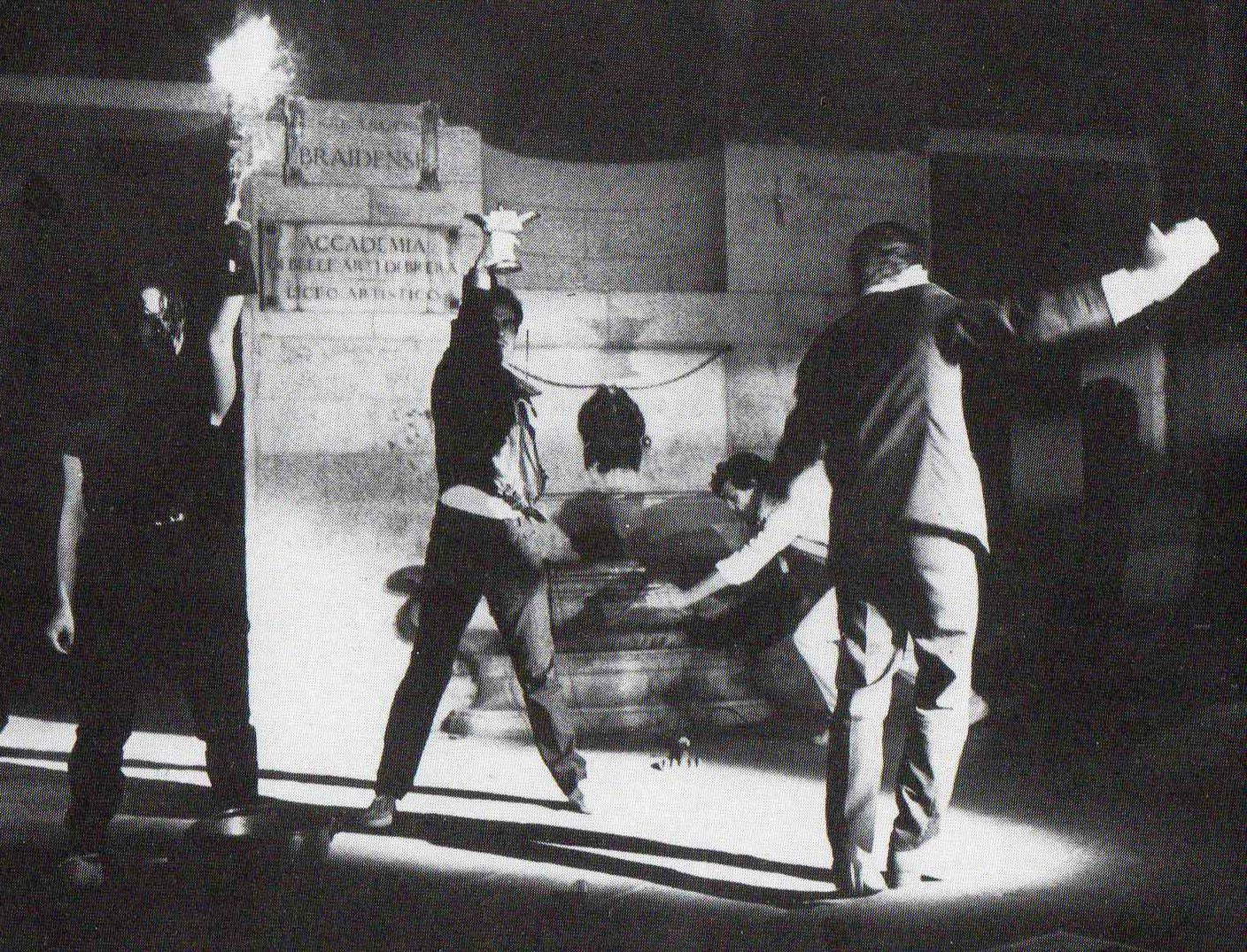



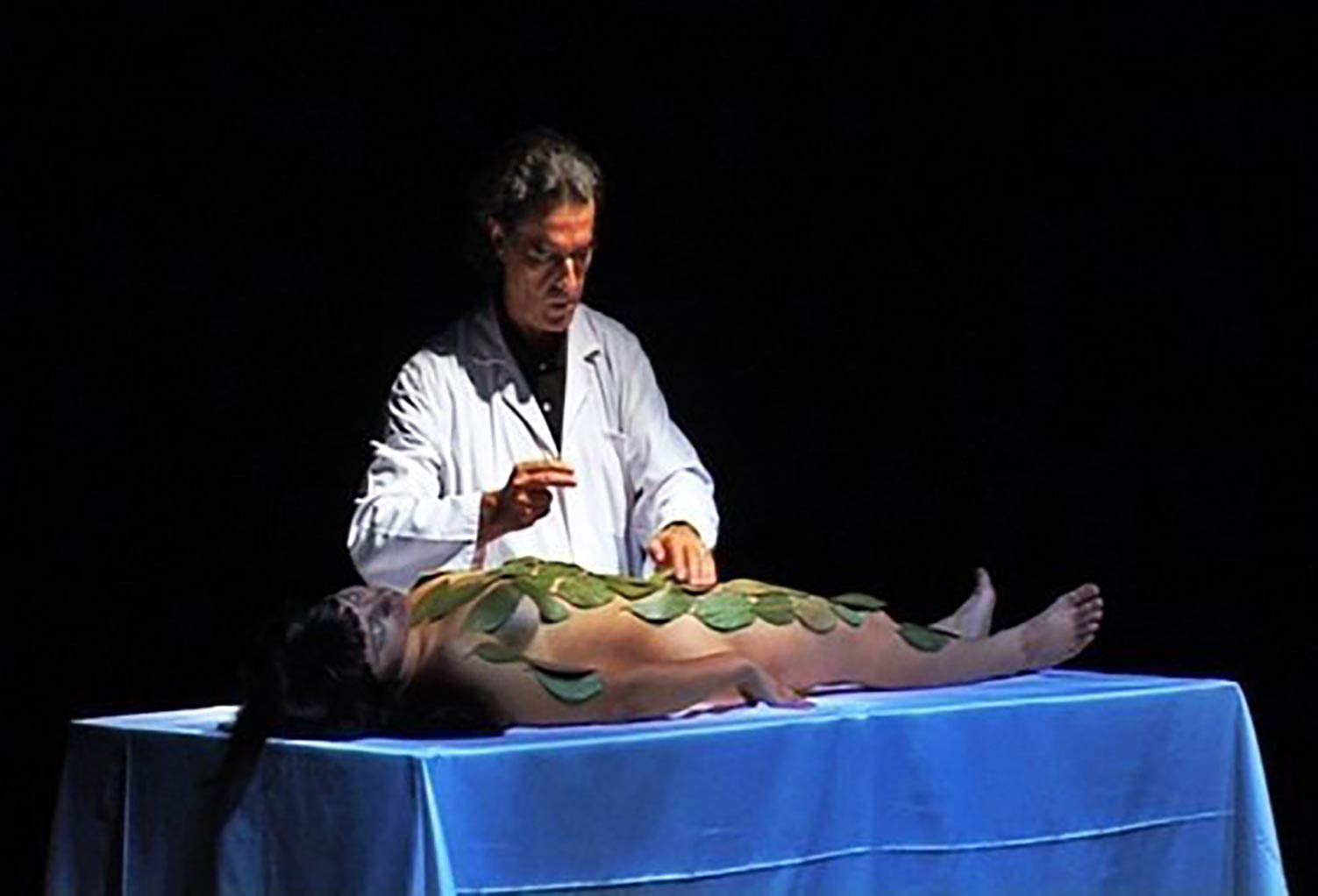
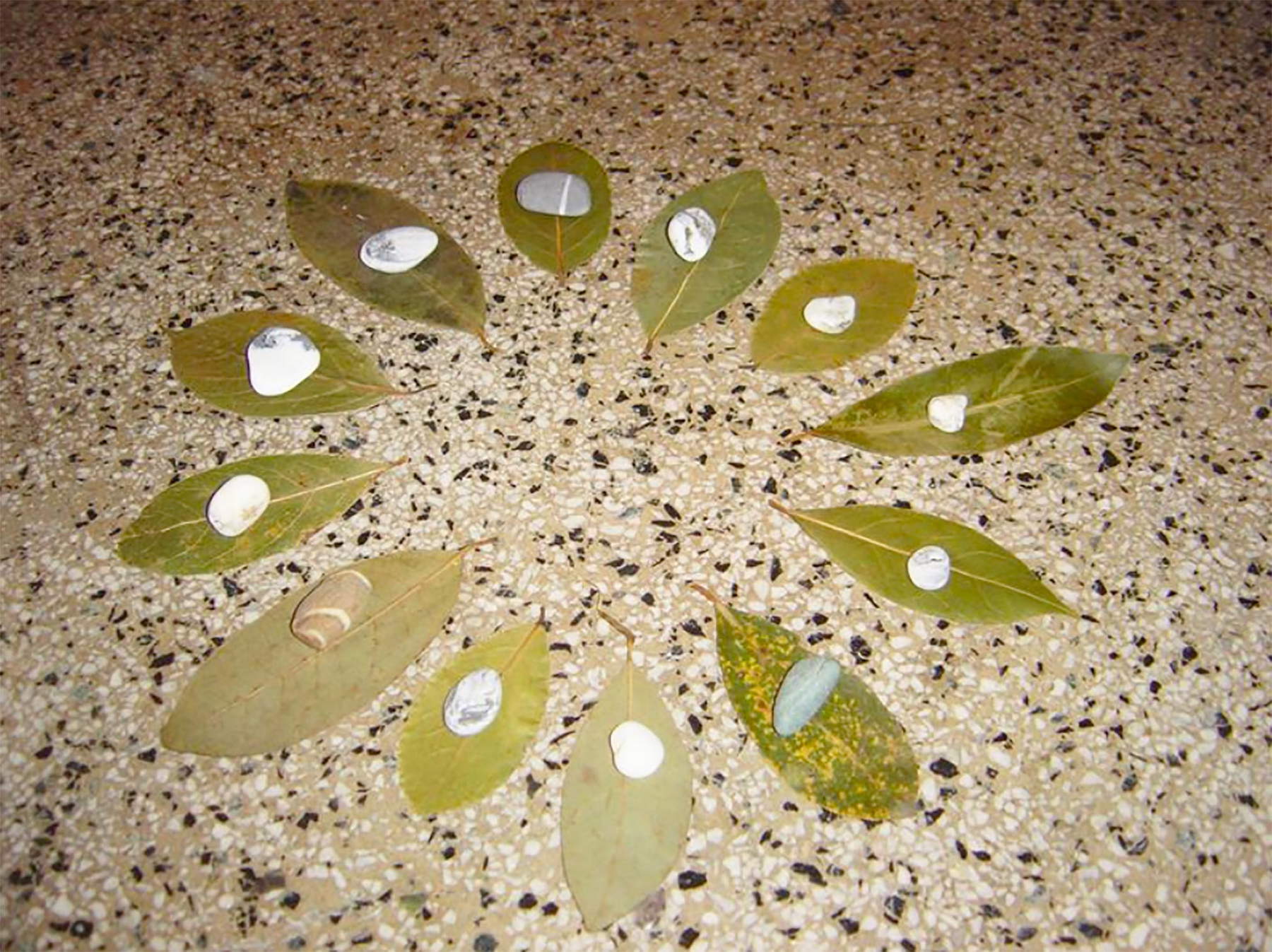
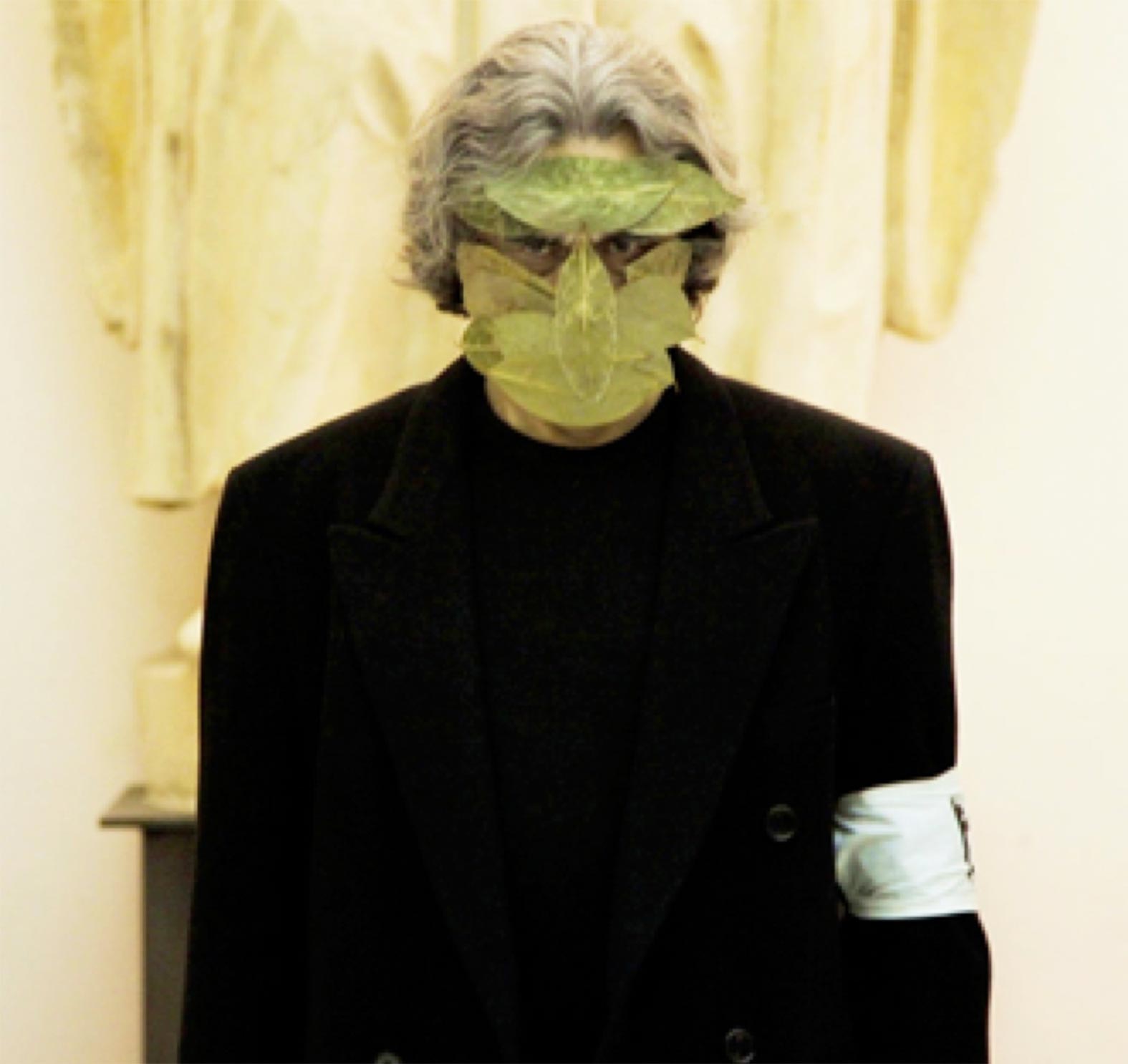


The 1980s as you said were years of reflux, what did they leave on you?
On me! ... besides my work nothing ... the reality of those years, not only artistic, I did not like at all....
In those years you started painting again, were you already doing it then in the same vein as you do now, that is, in close relation to your performance practice?
Actually, I never stopped: as Kounellis had said, you are a painter even if you don’t use the traditional tools of painting... and anyway, yes, everything has always been in close relation to performative practice... you just have to call things by the right name, so as not to create misunderstandings... such as, for example, the fact that I chose to call my drawings with an extra “s,” and that is dissegni... because they are performative acts, existential acts, they are not simple drawings, it would be reductive to call them that.
Angelo, let’s step back in time, what was the climate in Genoa in the 1960s-1970s?
Much better than today’s, definitely. The answer to your question is all in the exhibition that illustrated that period and that took place at the Entr’acte Gallery in Genoa a few years ago, in October 2016: Situations. Performative Logics in Genoa in the 1970s. An exhibition that presented works by 6 artists (Beppe Dellepiane, Fabrizio Plessi, Angelo Pretolani, Roberto Rossini, Petr Štembera, Geggi Tagliafico) related to those years. The exhibition was accompanied by a critical text written for the occasion by Pamela Pastori, not a critic, but a fellow friend who shared much of the events of that exciting season. I read some passages... "Something happened in Genoa in the 1970s, years difficult to forget, years of anger, years of struggle, even in art, years of contestation, by others more vulgarly called the years of lead. [...] Sensational, alienating, deliberately disorienting the actions of these artists, with a background of intriguing ambiguity they overturned every classical conception of ’staging’ or happening, because yes, something was happening and it was precisely this happening that generated meaning to thevisual encounter with the viewer; often the viewer was astonished, not understanding; others, on the other hand, allowed themselves to ’see something as something’ (Wittgenstein), but also as something else because in performance it is never about representations but, if anything, presentations, in a sprinkling of states of grace, fulfilling in those who were able to grasp them and absolutely alien to those who did not recognize them as such. Even today, forty years later, those performances remain charged with energy. [...] Bodies, at liberty; like the words of Marinettian memory. Never still and static even standing still. Ready for noise, yes, today as then in an unstoppable continuum that is simply necessary, because it is not a question here of actualizing a historical fact or even of being in tow of history. [...] for certain artists it cannot be otherwise and this is beauty, which is art and not artisticity. To be extraordinary, to dis-veil, outside all myths of cursing, outside the grayness of consumer society and entertainment [...] in a new redefinition of the art-life relationship."
Is the art-life relationship for you political/poetic?
The slogan “The personal is political” accompanied much of the struggles of the 1970s ... we can think about turning it into “The personal is poetic,” the other side of the same coin ... light and darkness... like my performances that always go through my everyday life, here is the art-life relationship that is also a political/poetic act... “Everything is political,” Thomas Mann said.
What role do you think the artist plays in society?
“Art is utterly useless,” said Oscar Wilde -- I would add: useless in the material aspect but useful in the spiritual aspect. Art is therefore unnecessary from the material point of view, consequently the artist who produces it can only be a marginal figure within society...in his marginality he has no real social task except to sprinkle beauty...out of the dreariness of the consumer and entertainment society.
What do you think beauty is?
It is a harmonious whole that can have various forms and that is perceived by everyone differently, according to their sensibility and culture ... and that gives emotion, a feeling.
Does the sacred have any importance in your work?
I answer by “fishing” from ekphrasis of my performances from “Under the pavement...”: Monday, Dec. 13, 2010. Angelo continues the ways of the sacred: he fixes a rising sea or falling sky on a canvas. He writes clumsily with lipstick: I do not express myself, I expose myself. He covers the words with seven fig leaves - production of sacred acts, sacrifices. Friday, October 2, 2015. Angelo continues his journey on the paths of the sacred; whispers, one is not in the seeking, if anything in the finding. He fights liquid instances of oblivion-drawing: traversing that initial nothingness by giving space to an indefinable feeling, breathing deeply, lashing small blows on the surface with a ballpoint pen, second after second, unhurriedly, giving con-tact, calling: small blows inflicted on the body of a drawing that slowly rises because it was already there; rhythmizing the gesture, eye brain and heart of a dance, sometimes macabre sometimes joyful, voluptuous even changing pen to change color. He brings his right hand to his forehead like a visor. Friday, Dec. 30, 2016. Angelo sighs; exhausted; seated for days he watches his father’s body lose its life, whispers, another piece of me gone. From finite to infinite. Into the streets of the sacred, he draws, marks without where, scattered, scattered. Friday, June 18, 2021. Angelo bathes first his forehead and then his neck with the water exposed last Friday to the night of the new moon; he whispers, leaving the shadows behind; it’s a landing. Knowing of his journey to the elusiveness of existence, a friend gave him her natal card. He closes his right hand into a fist and wears it over his heart.

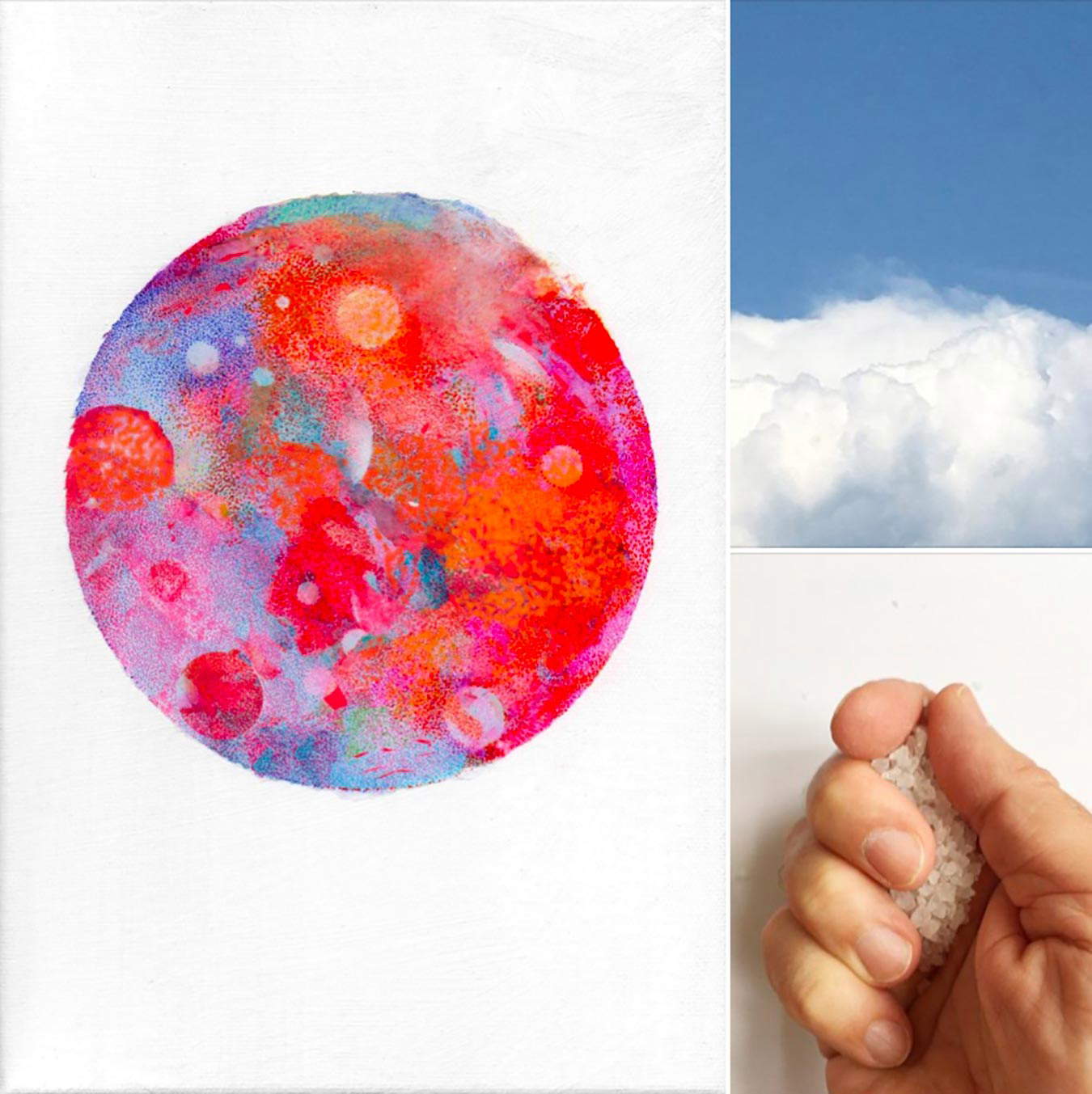
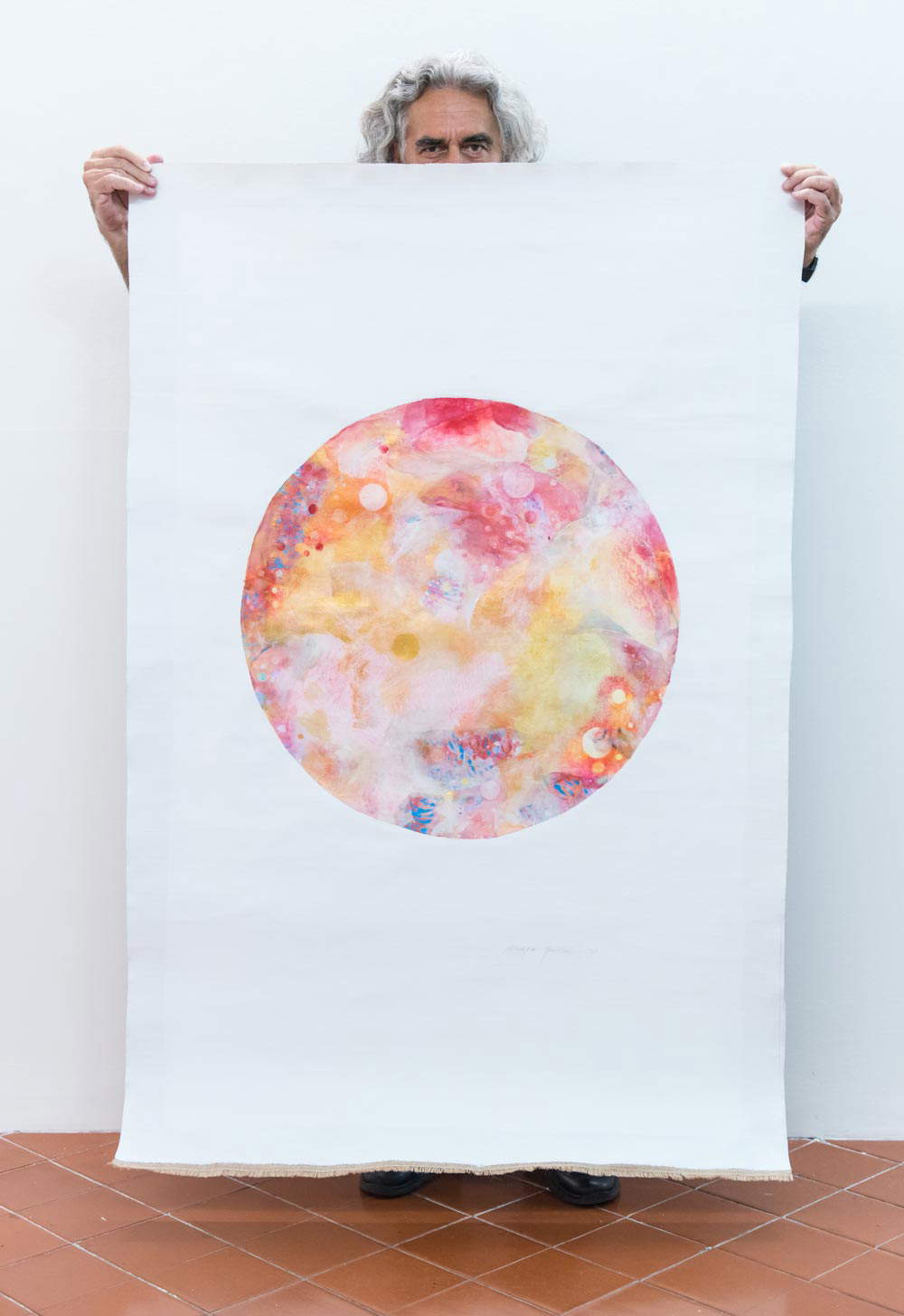
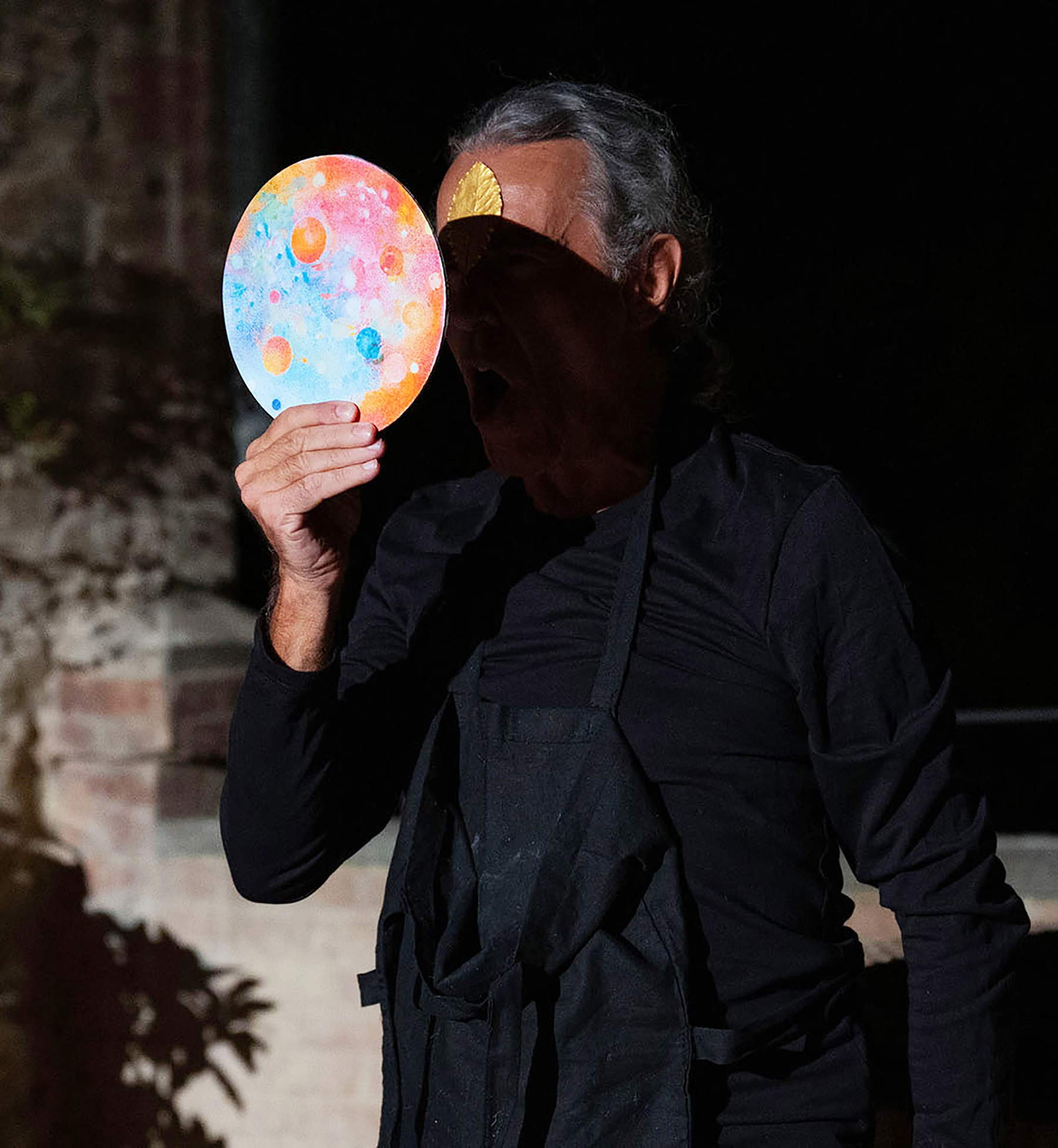




Reading your response I get the impression that your work in its daily making gives life to a vast enveloping landscape. I wanted to ask you where do you place yourself in relation to your work?
I can answer this question by stealing a phrase from Cristina Palmieri about Nitsch... Only by throwing oneself into art with totality, as well as in life, is it possible to overcome one’s transience.
To close this interview, I wanted to ask you about Sotto il selciato c’è la spiaggia, a performance cycle that you have been posting weekly on Facebook for ten years.
Under the pavement there is thebeach is the title that unifies this performative exhibition of mine that has taken place since 2008 on Facebook, a project created expressly to exploit the communicative potential of this social network. I called this operation Under the pavement there is the beach taking my cue from Helma Sanders’ 1975 film, itself carped at a famous slogan of the French May... Sous le pavés, la plage. These are performances with a minimal and liminal character, rotating around the self... of being in enérgheia, actions of meditation and consequently of syncretization... transcribed later on my Facebook page. The ekphrasis of these actions are real performances, not a work of literature or poetry or haiku, it is a performance work where everything really happens! An idea of performance that can also be understood as a practice of introspection and thus absorbed as a spiritual and bodily experience at the same time. The rhythm of these performances took place on a daily basis until April 2013, meaning that I posted a performance on Facebook every day for five years. Subsequently, the operation took different forms and, above all, different times: no longer every day, but every Friday, working on the wild identity of Friday-Robinson, actually feeling myself on a desert island, always with performative modes and accompanied by drawings (I prefer to call them dissegni, a term I adopted from the April 14, 2017 performance) that I then like bottled messages entrust to the magnum sea of the net. Luca Blissett on Facebook commented thus, “Drawings reminiscent of mandalas, magical and symbolic images; rituals of meditation toward the symbolism of the Universe - Kairos erases Kronos and suspends the notion of time. These signs generate energies that flow in the circularity of the wheel of life, in the eternal circle, Kosmòs.” As Cristina Palmieri pointed out, “To dissemble is to disseminate signs, to find them, to let them emerge. To construct a drawing from the juxtaposition of small and minute traces. Elements that together make up the totality, as infinitesimal but urgent and irreplaceable parts. Portions of an infinite universe, but ultimately ”decomposable“-or ”composed“-in millions of elements, like the cosmos, like us, human beings. It is not for nothing that the prince form, par excellence, the one that recurs in every work, is the circle. A kind of Jungian mandala in which the artist, precisely, scatters his signs.” Moreover, these actions are transcribed on Facebook in the third person immediately after the event, as if it was not me but someone else who performed the action. A liminal act. As I have explained other times it is a “dispossession,” I always lose something of me at the end of the action. I expose myself, I do not express myself. As a producer of meaning and not of meaning. In Cioran’s words, “It empties itself, therefore it saves you, it deprives you of a cumbersome overload.” And I would add, the moment it is passed on to others it becomes a gift.
Warning: the translation into English of the original Italian article was created using automatic tools. We undertake to review all articles, but we do not guarantee the total absence of inaccuracies in the translation due to the program. You can find the original by clicking on the ITA button. If you find any mistake,please contact us.